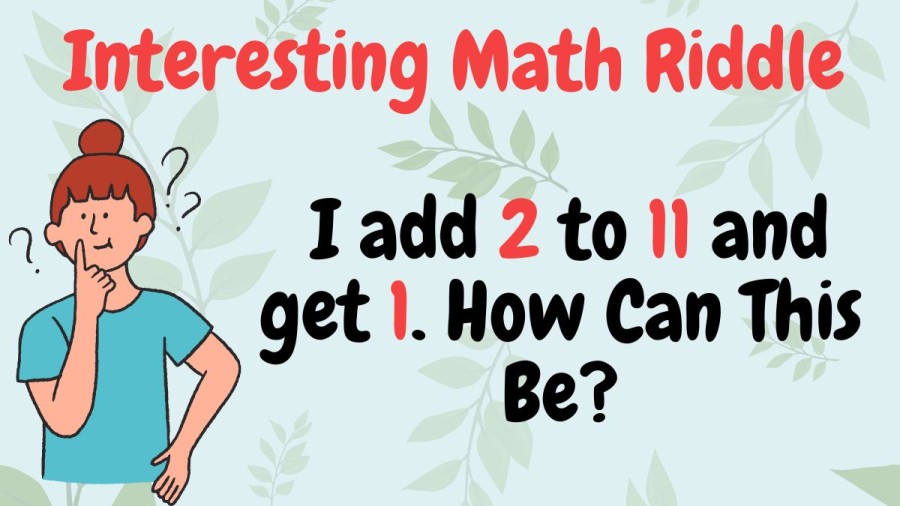Interesting Math Riddle: I add 2 to 11 and get 1. How Can This Be?
by P Nandhini
Updated Feb 28, 2023

What Is a Tricky Math Riddle?
Tricky riddles have been enjoyed by people of all ages for centuries. They are not only fun and entertaining, but they also provide a wide range of benefits for the brain and overall mental health. In this article, we will explore the benefits of tricky riddles and why you should consider incorporating them into your routine. Tricky riddles require a great deal of critical thinking to solve. You need to analyze the clues provided, think creatively, and come up with a solution that may not be immediately apparent. This type of thinking helps to develop problem-solving skills and can be useful in all areas of life. Continue reading to get an exciting riddle in this article for you.
Interesting Math Riddle: I add 2 to 11 and get 1. How Can This Be?
A math riddle is a puzzle that involves mathematical concepts or operations. It often presents a problem or scenario that requires creative and logical thinking to solve. Math riddles can range from simple arithmetic puzzles to complex mathematical problems that require knowledge of algebra, geometry, calculus, and other branches of mathematics. They can be a fun way to exercise your brain, improve your problem-solving skills, and learn new mathematical concepts. Math riddles can also be used as a teaching tool to help students develop a deeper understanding of math and to make learning more engaging and enjoyable. Interesting Math Riddle: I add 2 to 11 and get 1. How Can This Be? is a math puzzle that will challenge you to think critically and logically. So let's look at the riddle with image.

Read the riddle carefully: Make sure you understand the problem before attempting to solve it. Sometimes, the best way to solve a math riddle is to try different approaches until you find the right one. Try to break the problem down into smaller parts, and use deduction and induction to work out the solution.
Interesting Math Riddle: I add 2 to 11 and get 1. How Can This Be? - Solution
As humans, we love to engage in activities that challenge our minds and force us to think outside of the box. Solving riddles is one such activity that has been enjoyed for centuries across different cultures. Riddles can be found in books, puzzles, and even in our daily lives, and they often require us to use our critical thinking skills to arrive at a solution. By engaging in this activity, you can improve your problem-solving abilities and enhance your cognitive skills. That's because riddles are designed to be tricky, so it's important not to limit your thinking. However, it can be frustrating when you're unable to come up with the correct answer. No worries we got you.
It's 11 a.m. and I add 2 hours to it to get to 1 p.m.

Congratulations If you correctly guessed the answer, if not, better luck next time. It's important to remember that the point of a riddle is to challenge you, so don't become discouraged if you can't solve it right away. Instead, remain persistent and use creative thinking to explore different possibilities.This riddle may appear challenging at first, but if you take the time to carefully review it, you may realize that the answer is simple.
How To Solve The Math Riddle Quickly?
Interesting Math Riddle: I add 2 to 11 and get 1. How Can This Be? FAQs
Experts agree that riddles are a great way for kids to improve their critical-thinking ability and creativity. Creativity is the ability to discover new and original ideas, connections, and solutions to problem.







